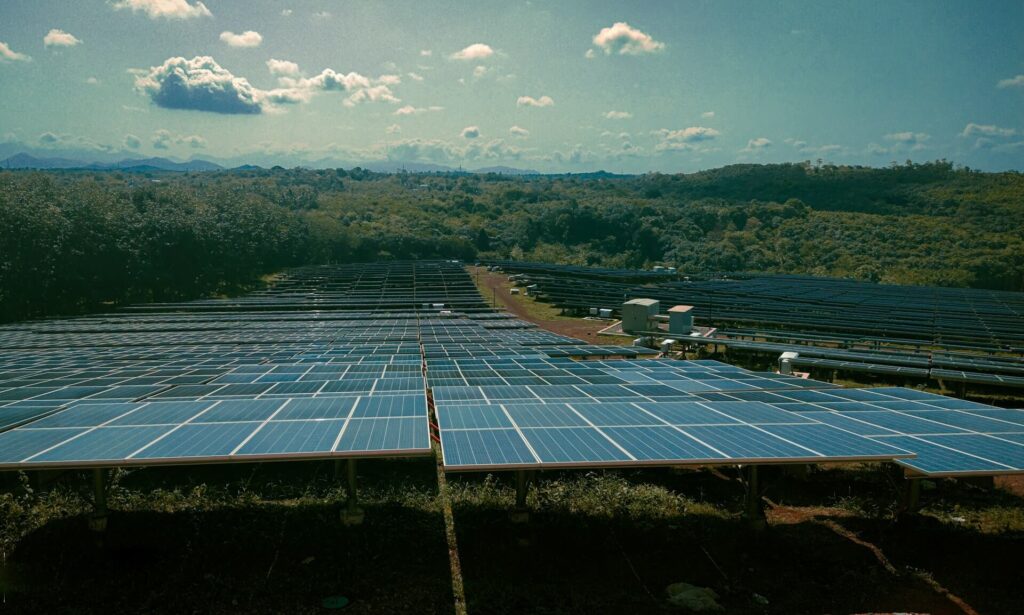
Solar energy from Solar Power Plants on an average has grown 1300% from 2014. In the United States of America, it has grown from a mere 18 GW in 2014 to around 140 GW in 2023; in Europe it has grown from 80 GW in 2014 to 250 GW in 2023; in China, it has grown from 28 GW in 2014 to 390 GW in 2023 and in India it has grown from 2.6 GW in 2014 to 70 GW in 2023.
All countries have seen unbelievable growth in terms of Solar Power Energy capacity. The most impressive among them is India, partly because of how densely populated it is in most parts, leaving very little open space to install large scale solar plants but with the efforts of the government and good policies, they have been able to achieve good results. It also has the largest solar park in the world, The Bhadla Solar Park situated in the Thar desert, India and has a total capacity of 2,245 MW.
Solar Power Plants are very important for the Earth because the energy we get from traditional energy sources like Coal and Gas comes at a huge cost to this earth. Currently, approximately 80% of global energy needs are filled by burning fossil fuels and burning fossil fuels leads to release of lot of harmful chemicals into the atmosphere, and because of those gases the earth’s atmosphere has been terribly affected. We must transition to cleaner fuels to save our planet.
About the Article:
In this article we will talk about:
- 1. Solar Panels.
- 2. Types of Solar Panels.
- 3.Benefits of Solar Power Plants.
- 4. Everything you should know before Installing Solar Power Plants.
- 5. Installation Process of Solar Power Plants.
- 6. Conclusion.
Good Solar Panels are important for the plant to function effectively, let’s learn how Solar Panels work and their different types-
Understanding Solar Panels
What are solar Panels?
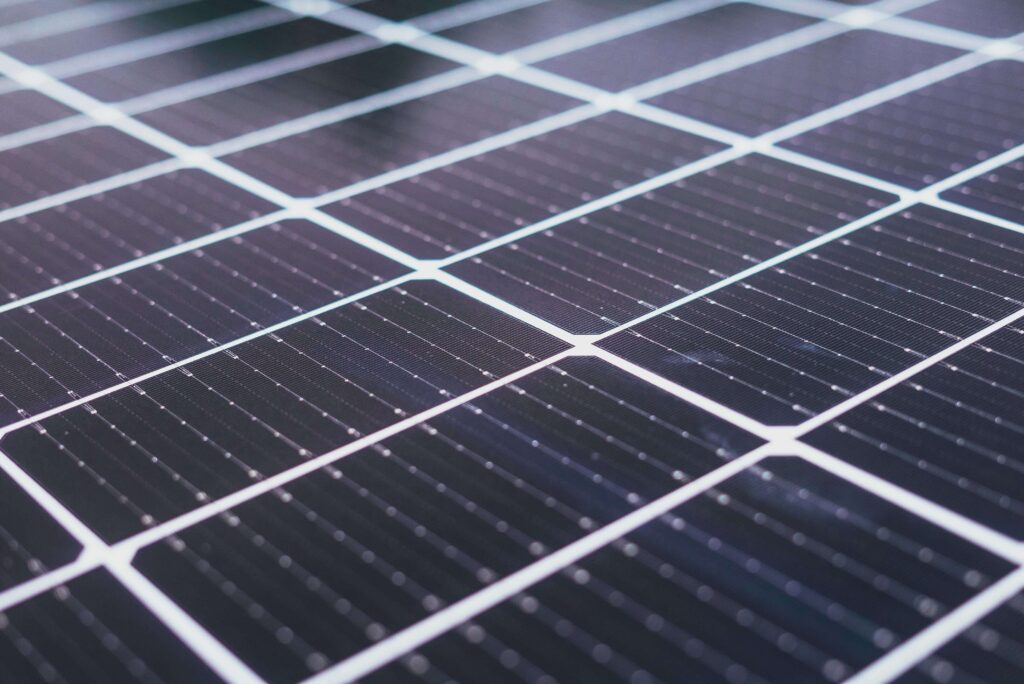
Solar panels convert sunlight into electricity using photovoltaic (PV) cells, also known as Solar Cells, typically made of silicon. When sunlight hits a PV cell, it excites electrons, creating an electric current. This direct current (DC) electricity is then converted to alternating current (AC) by an inverter for use in homes and businesses.
Solar panels are composed of multiple PV cells protected by a glass layer and framed for durability. They can be installed on rooftops or ground-mounted systems. You can also see them on tiny devices that require less power like Calculators, Remote Controllers, Street Lights etc.
How do Solar Panels Work?
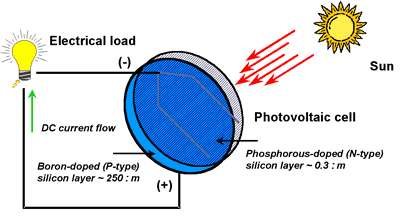
Solar panels consist of P-N Junction diodes that generates electricity when hit by sunlight or any other light source. Let’s explain that in layman terms so you some sense of what that actually means.
Now, pure semiconductors aren’t very useful for us, so we need to change some of their properties to make them actually useful and to do that we add impurities into it. Two such types of semiconductors are P-type and N-type semiconductors. When two P-type and N-type semiconductors are joined together they form a junction in between them which has very unique properties.
That unique property then helps us generate electricity when photons(light) hits that junction. When enough light hits the junction, we get a continuous flow of electrons which is basically electricity and adding enough such junctions together can give us lots of electricity. This system of generating electricity from solar is known as a solar cell.
Types of Solar Panels:
Monocrystalline Solar Panels:
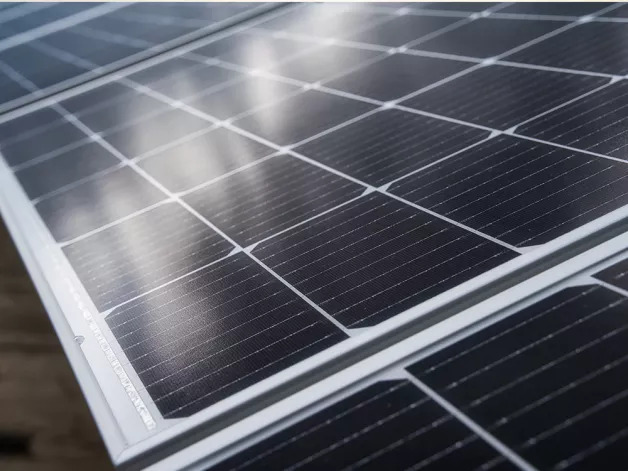
Monocrystalline solar panels are made from a single continuous crystal structure. They are the oldest and most developed type of solar technology. Monocrystalline panels have higher efficiency, typically ranging from 15% to 20% or higher.
They can be recognized by their color which is black and have a uniform appearance due to the manufacturing process.
Advantages:
- 1. High Efficiency.
- 2. Requires less space for same amount of energy produced compared to other panels.
- 3. Can last very long, they usually come with 25 years of warranty.
Disadvantages:
- 1. They are more expensive.
- 2. The process leads to some wastage of materials.
Polycrystalline Solar Panels:
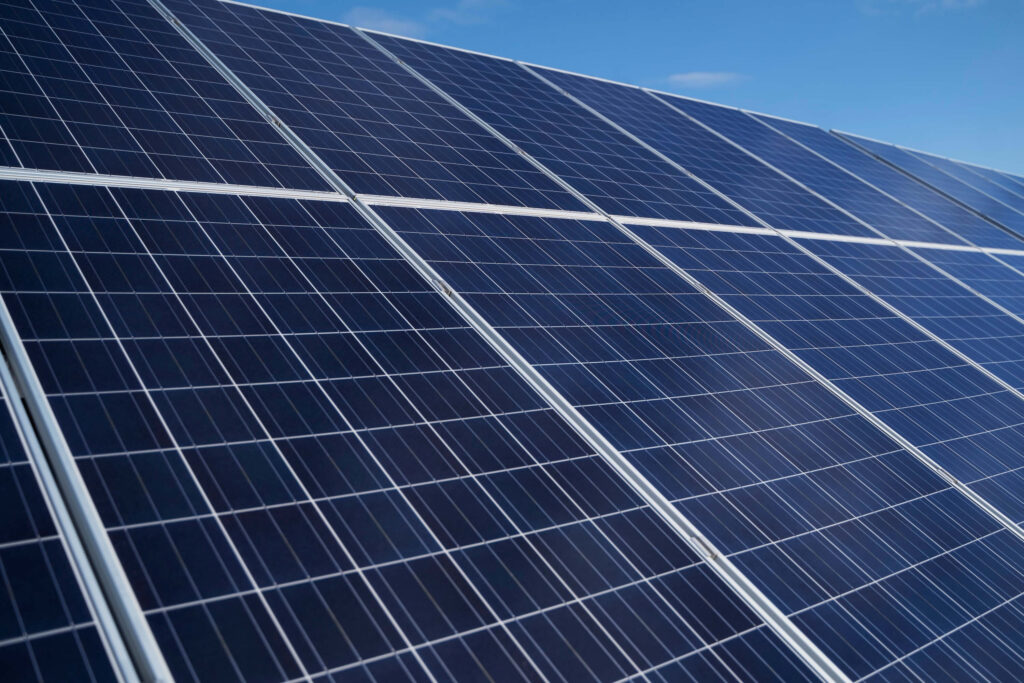
Polycrystalline solar panels are made from silicon crystals as well, but the manufacturing process differs significantly, leading to distinct characteristics. These panels have an efficiency of 13 % to 16%. They can be identified by their appearance. They have a blue hue and a speckled appearance due to the manufacturing process.
Advantages:
- 1. Cheaper than monocrystalline.
- 2. It creates less waste during the manufacturing process.
Disadvantages:
- 1. Lower efficiency
- 2. Performance can degrade more significantly at higher temperatures compared to monocrystalline panels.
Thin-Film Solar Panels:
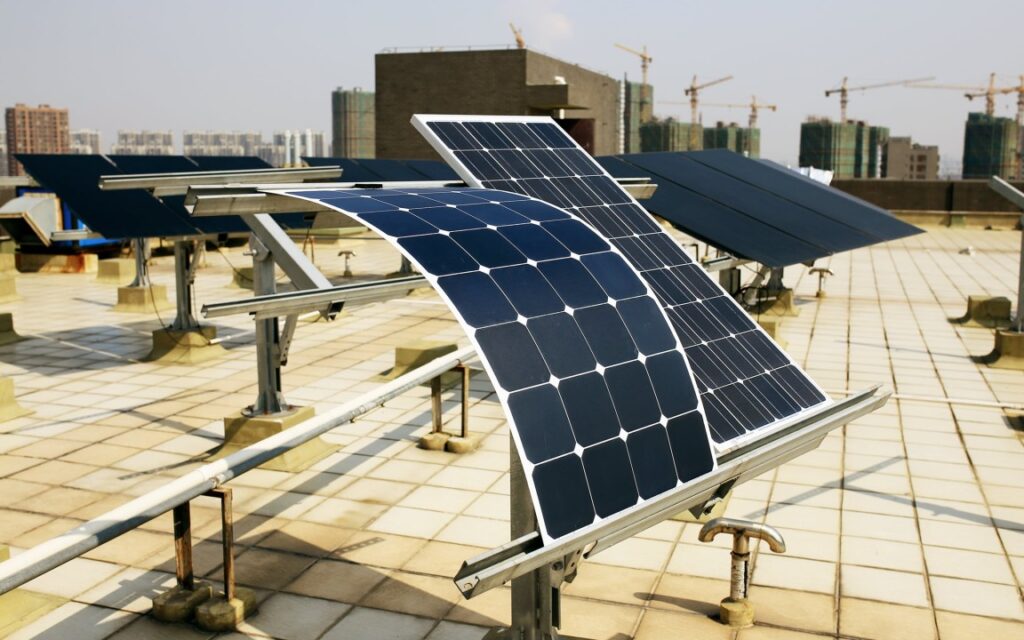
Thin-film Solar Panel a Solar Panel that uses an entirely different manufacturing process. These panels have this very unique and useful feature that they can be bent i.e. they are flexible. They are not very efficient can the efficiency varies from 7% to 13% based on the manufacturing process. They can be identified by their uniform and smooth look and their bendability.
Advantages:
- 1. Flexibility.
- 2.Lightweight.
- 3. They are generally cheaper than other panels.
Disadvantages:
- 1. Lower Efficiency.
- 2. They may degrade faster over time compared to crystalline panels.
- 3. Some types of these panels can be harmful to the environment.
Benefits of Solar Power Plants:
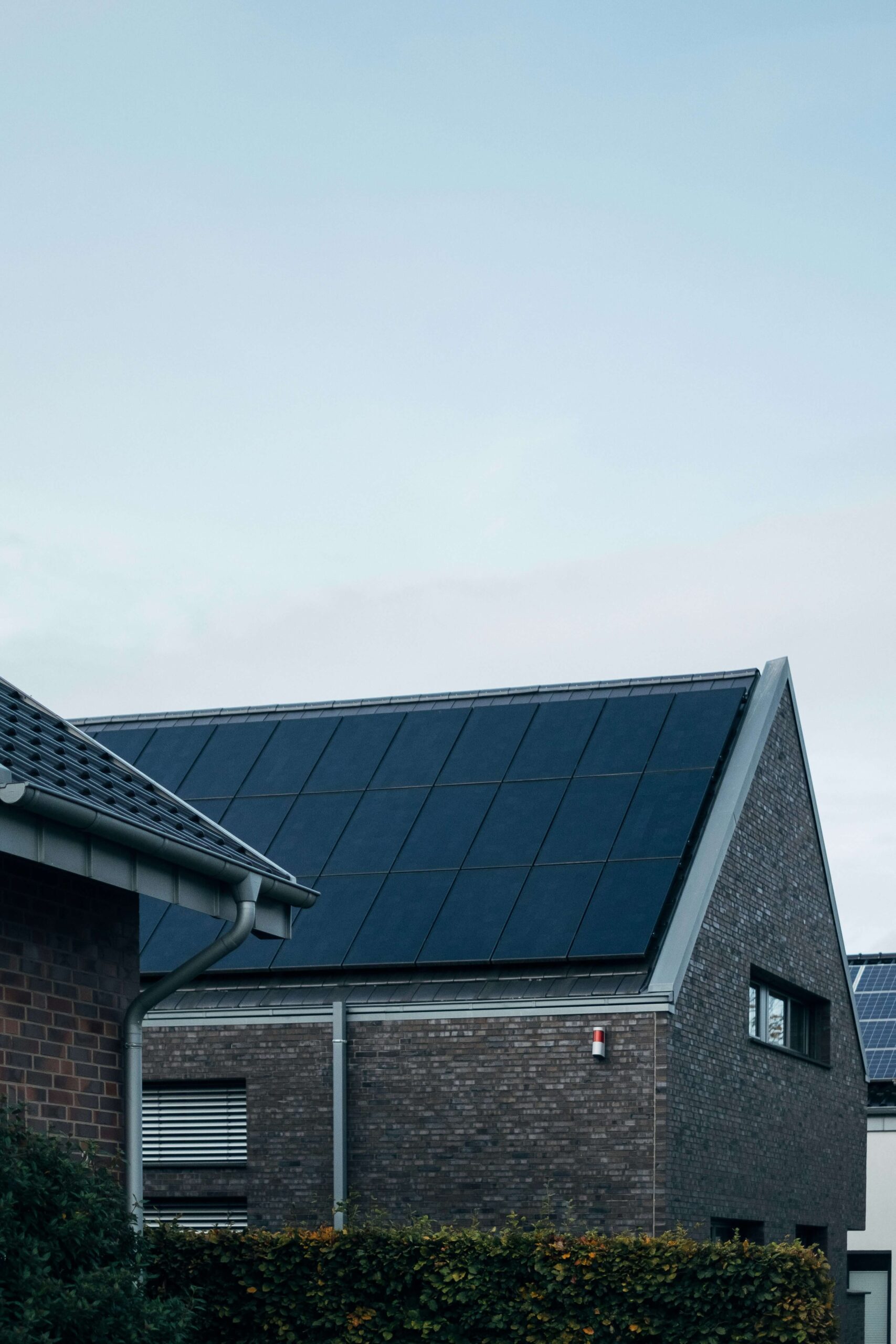
Environmental Impact:
Solar Power Plants help in reduction of carbon footprint:
In 2024 the world’s most selling car model is an electric car, the Tesla Model S. While electric cars are great at reducing carbon footprint (the total amount of greenhouse gases (including carbon dioxide and methane) that are generated by our actions.) but only when you are using clean energy to recharge them, by clean energy I mean electricity generated by Hydroelectric Powerplants, Wind, Solar etc.
So, for a person who owns an electric car, it would be greatly beneficial for him if he can charge his car using solar panels installed on his roof. It doesn’t matter if you have an electric car or not, if you can replace some of your fossil fuel energy with solar energy, you can greatly reduce your carbon footprint.
Solar Power Plants contribute to renewable energy:
One great problem with solar energy was energy storage, when a solar plant is producing more than it is getting consumed, you have to store it in a battery to save the energy, to use it later but you can only install a battery so big.
But now that problem is solved mostly, because in most of the countries including USA, China, most of Europe and India, you can connect your Solar Energy Plant installed at your home to the grid; which means you can pass on the excess power generated by your roof solar power plant back to the grid for it to be redistributed to other places and for that you will receive a reduction in your electricity bill. This way you are helping the earth and contributing renewable energy to the society.
Economic Benefits of Solar Power Plants:
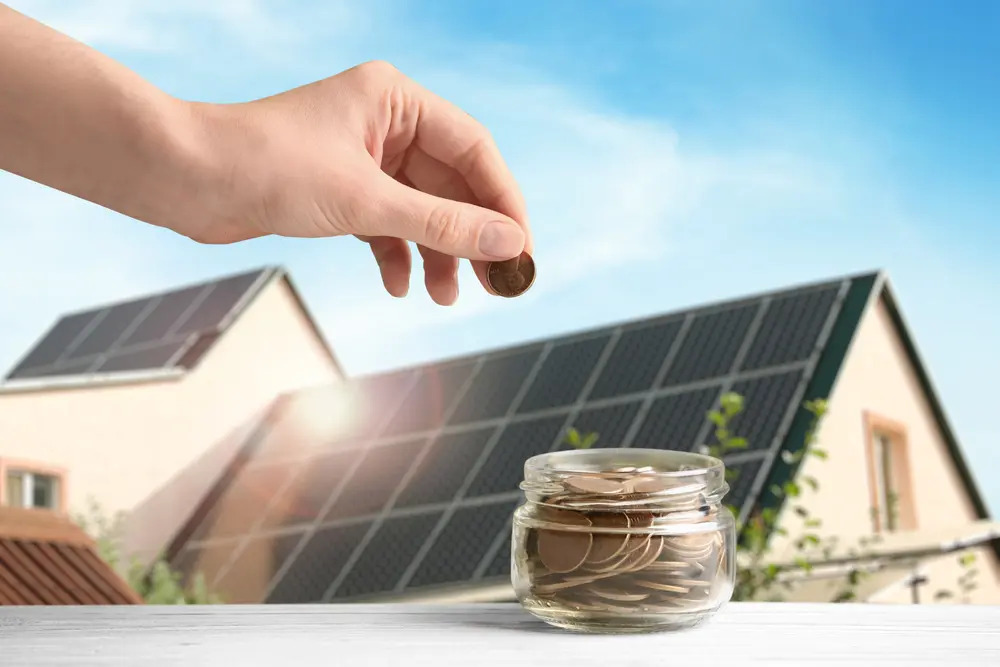
Savings on electricity bills:
As discussed above, by using solar energy, your dependence on the electricity from the grid will be lesser and you can also lower it further by connecting your plant to the grid. You will probably save $50,000 to $60,000 dollars in electricity bills in the average lifespan of the plant.
Potential government incentives and rebates.
Currently, governments of most countries are providing good incentives in solar panel installations. I have pointed out some of the benefits given in some countries:
USA:
Federal Solar Tax Credit: 30 % of your total value for solar photovoltaic systems installed between 2022 and 2032.
Property Tax Exemptions: You don’t have to pay more tax after installation solar panels.
India:
Solar energy systems with a capacity of up to 2 KW are eligible for a subsidy of up to ₹30,000/ kW. For a system capacity of 3kW, consumer can avail a subsidy of ₹78,000.
Energy Independence
I think one of the biggest advantages of installing solar systems is when we are faced with natural calamities like storm or anything that disrupts electric lines. In such situations we can keep using our electric devices using solar energy.
Everything you should know before Installing Solar Power Plants.
Installing solar panels for your home or office might be complex task but we will try to make it easy for you.
Energy Needs Assessment:
To find out the correct capacity for your solar plant, you can do the following:
- Collect your electricity bill for the last 12 months, if you have a prepaid connection, calculate the annual consumption.
- Find average daily consumption:
Sum the kWh used over the 12 months.
Divide the total by 365 to get the average daily usage.
Average Daily Usage(kWh) = Total Annual Usage(kWh) / 365
- To find out the total panel capacity needed:
Divide your daily energy consumption by the peak sun hours:
Total Capacity(kW) = Average Daily Usage(kWh) / Peak Sun Hours
- We need to factor in losses because of inverter, shaping etc. and have some buffer for future expansion or increase in energy need.
Adjusted Capacity(kW) = Total Capacity (kW) X (1 + Loss Percentage)
To make it easier for you, here is a sample calculation:
Example Calculation:
Daily consumption: 40 kWh
Peak Sun Hours: 5.5 hours
Total Capacity = 40kWh / 5.5 hours = 7.27 kW
Factoring in losses: 7.27 X 1.15 = 8.36
Therefore, you can install an 8.36 or higher solar plant for your home.
Roof Suitability and Space:
For a 1kW system, a roof of 100 Sq. Ft. with direct exposure to sun is required. For a 3 KW system, a roof with around 300 Sq. Ft. should be sufficient. You can get a rough idea about your area requirements or solar plant capacity from this information. A solar technician who can check your site in-person will be better equipped to give you a more accurate answer.
Budget and Financing Options:
All these benefits won’t matter if you can’t afford it, so let’s talk about the cost of installation of a solar plant.
With the current incentives by different governments in place, the cost of installing a solar plant at your home is not that expensive. On top of that, there are many EMI options for you to take advantage of, if you don’t want to pay upfront. We have already talked about the different incentives by different governments of the world, you can check your regional government website to check out the incentives available for you.
Initial Costs Vs. Long-Term Saving for Solar Power Plants.
The number one reason why people hesitated to install solar plants are their homes and offices was the high cost of installation, the existing electricity supply was already perfect for them but with time the prices of solar panels have come down a lot and along with that the governments subsidies make them even cheaper.
Solar Plants can save you a lot of money through the year, you are not only saving money but also helping the environment and being smart, to show the way to others in your society that we can enjoy life without harming nature. You can save from 50-60 thousand dollars for the average life span of your power plant.
Choosing the right Installer for your Solar Power Plant:
These are the best installers of solar power plants in USA, Europe, India and China
USA:
- SunPower
- Tesla
- Blue Raven Solar
INDIA:
- Tata Power
- Adani Solar
- Vikram Solar
Europe:
- Victron
- Photowatt
- Hanwa Q Cells
China:
- 5Star Solar
- Akome Optronicss Science & Technology
- Am Solar
The best advice I can give you is, check the government websites in your local area and then find out the suppliers that are working with the government for the subsidized programs, if your country allows you to get the solar plant installed from anyone and then just submit the documents to get the subsidy. But in some countries the government authorities handle everything from installation to choosing installation partner and you can only know if you check your local government website.
Power Purchase Agreement (PPAs):
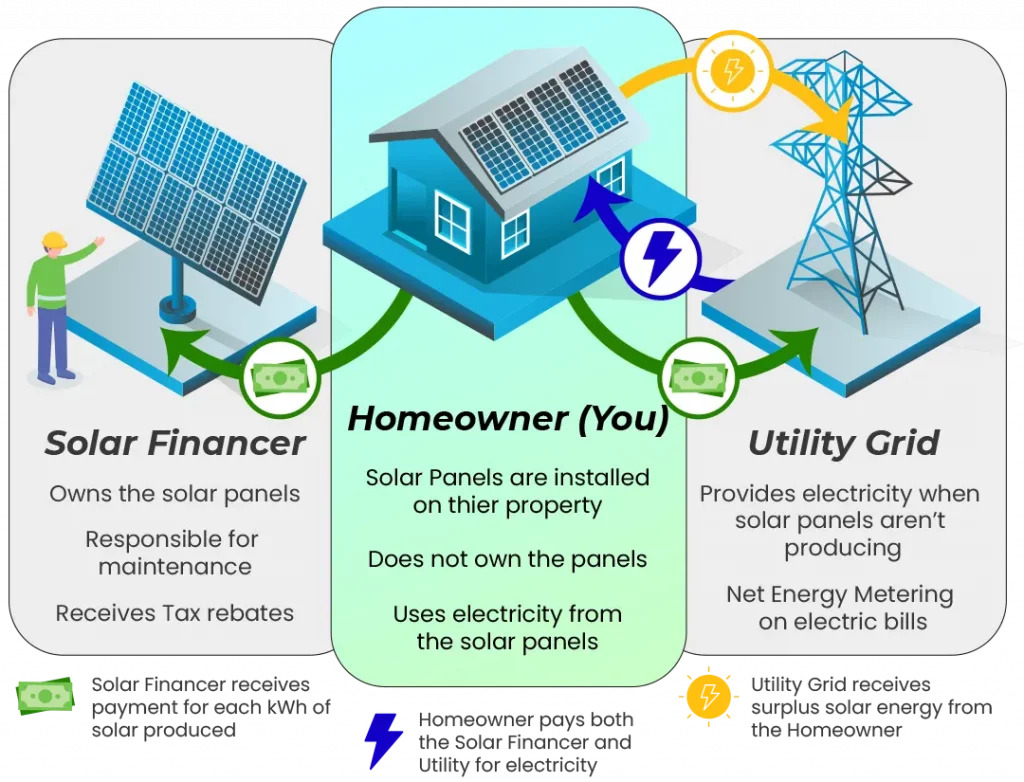
A power purchase agreement is a system where a developer arranges for the design, permitting, financing and installation of a solar energy system on a customer’s property at little to no cost. The developer sells the power generated to the host customer at a fixed rate that is typically lower that the local utility’s retail rate.
This lower electricity price serves to offset the customer’s purchase of electricity from the grid while the developer receives the income from these sales of electricity as well as any tax credits and other incentives generated from the system.
This is a great system for someone who doesn’t want to invest directly but wants to reap the benefits of solar power.
Installation Process of Solar Power Plants:
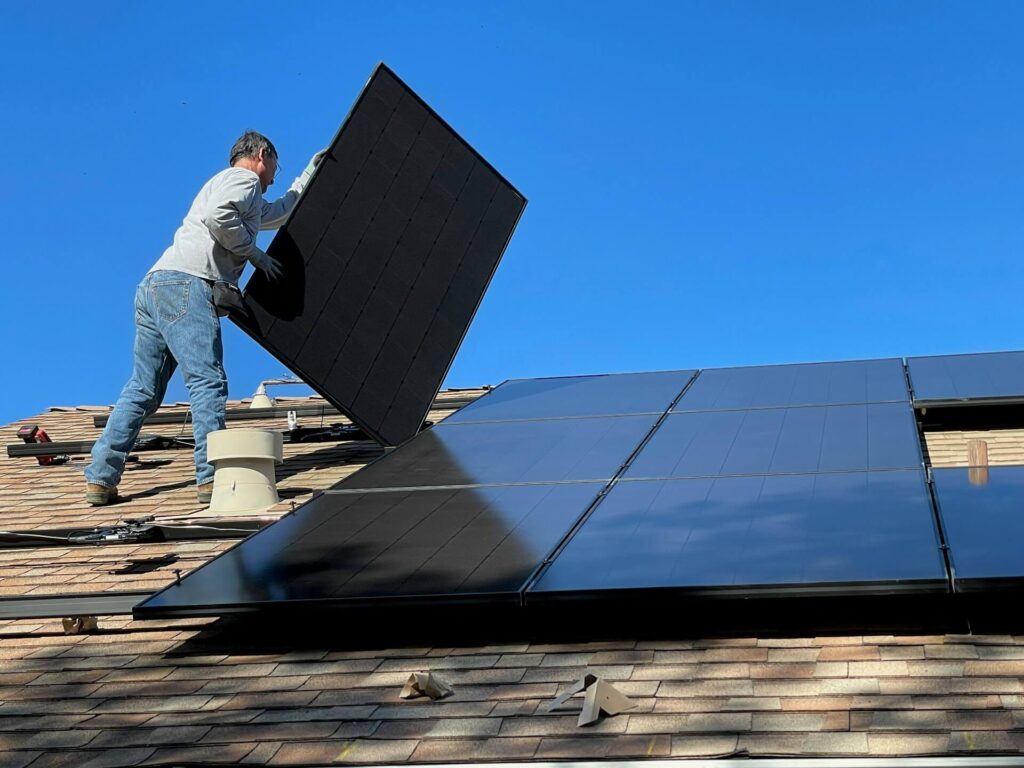
Site Assessment and Planning
The first step in installing a solar plant at home is a thorough site assessment. This involves evaluating your home’s roof or available land to determine if it’s suitable for solar panel installation.
A solar technician or engineer visits your home to assess factors such as the roof’s angle, orientation, shading from trees or nearby buildings, and the structural integrity of the roof.
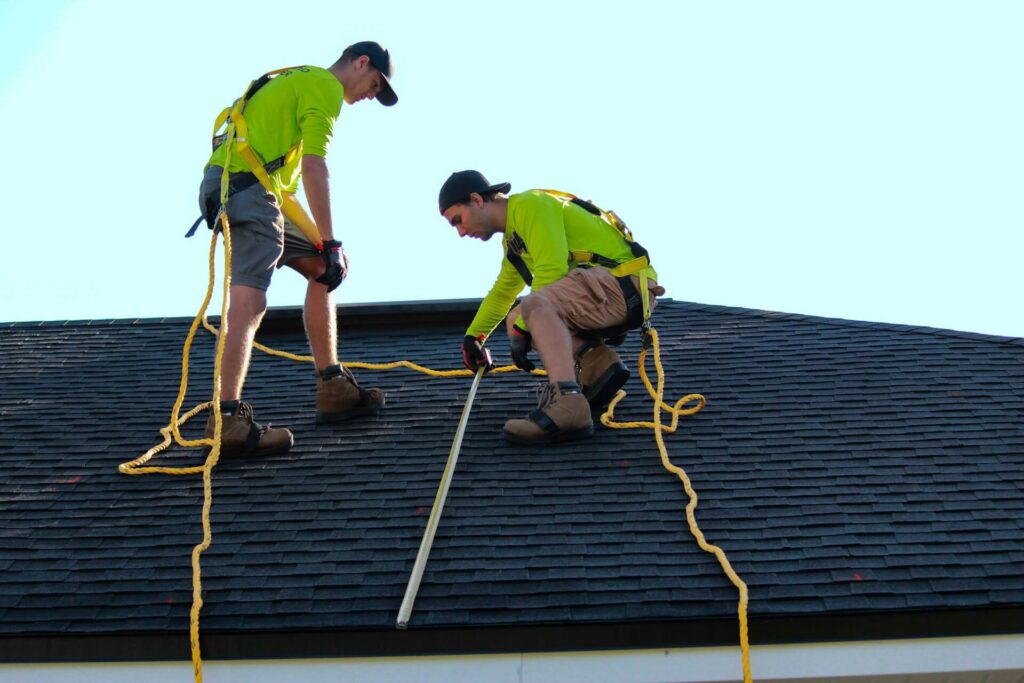
They’ll calculate the potential solar energy your site can generate, considering sunlight exposure throughout the day and year.
Based on this assessment, they’ll create a detailed plan that includes the best positioning for the panels, the number of panels needed, the type of panels (monocrystalline, polycrystalline, etc.), and the estimated energy output.
Obtaining Permits and Approvals
Installing a solar plant requires various permits and approvals to ensure compliance with local building codes, safety standards, and utility regulations.
The solar installation company typically handles this process, submitting applications to local authorities for permits related to electrical work, building modifications, and zoning.
In some areas, you may also need to obtain approval from your homeowner’s association (HOA) or meet specific community guidelines.
The permitting process can take anywhere from a few weeks to a few months, depending on your location and the complexity of the installation.
Installation Timeline and What to Expect
Once planning and permitting are complete, the installation of your solar plant can begin. The timeline for installation varies based on the size of the system and site conditions.
Preparation Phase: This involves setting up scaffolding, preparing the roof, and organizing materials. It usually takes 1-2 days.
Installation Phase: Solar panels are mounted on the roof, electrical wiring is installed, and the inverter is connected to your home’s electrical system. This phase typically takes 1-3 days.
Inspection and Connection: After installation, an inspection will be conducted to ensure everything is installed correctly and safely. Once approved, the system will be connected to the grid, and your home can start generating solar power.
Post-Installation Checklist
System Testing and Performance Monitoring
After installation, the solar system will be tested to ensure it is operating correctly and efficiently.
Technicians will check all electrical connections, test the inverter, and ensure the system is generating the expected amount of power.
They will monitor this system for a short period to track performance and ensure it meets the estimated energy output.
You may be provided with monitoring software or an app to track your system’s performance in real-time.
Maintenance and Upkeep Tips
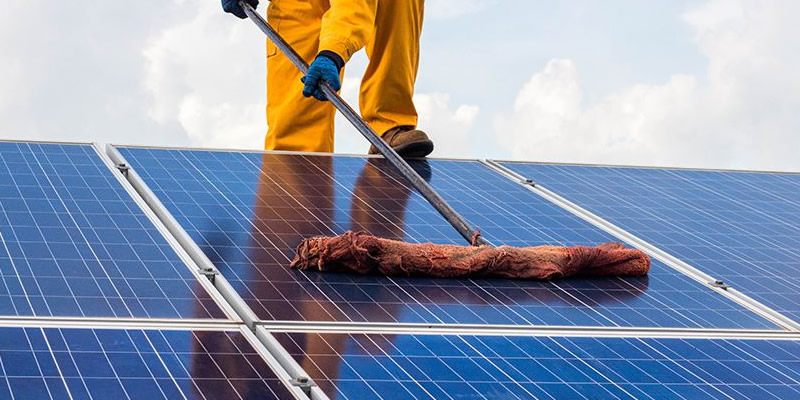
While solar systems are relatively low-maintenance, regular upkeep is essential for optimal performance and longevity.
Cleaning: You should clean your Panels periodically to remove dust, dirt, and debris that can reduce efficiency. You can use a water spray of a microfiber dust remover to clean then once in a while.
Inspections: It’s advisable to have your system inspected annually by a professional to check for any wear, damage, or issues with electrical components.
Monitoring: Regularly monitor your system’s performance through the provided app or monitoring service to ensure its operating correctly. If you notice any drop in performance, contact your installer for an inspection.
Tree Trimming: Keep surrounding trees trimmed to prevent shading on the panels, which can reduce efficiency.
Conclusion:
With the recent government push, solar energy is becoming more accessible and affordable than ever. While many were hesitant due to the high upfront costs and the reliability of traditional electricity, the benefits of solar are now undeniable. Lower utility bills, freedom from load shedding, and a positive impact on the environment make solar a compelling choice.
Therefore, I encourage you to explore how you can take advantage of government subsidies and install a solar plant in your home, securing both financial savings and a cleaner future.
Additional Resources:
Learn in-depth about working of Solar Cells: Theory of Solar Cell (g2voptics.com)
Calculate Savings for India: National Portal for Rooftop Solar – Ministry of New and Renewable Energy (pmsuryaghar.gov.in)
US Government Grant Program Details: Solar Tax Credit By State 2024 – Forbes Home
Indian Government Subsidy Program Link: Apply for Rooftop Solar, Ministry of New and Renewable Energy | National Government Services Portal (india.gov.in)
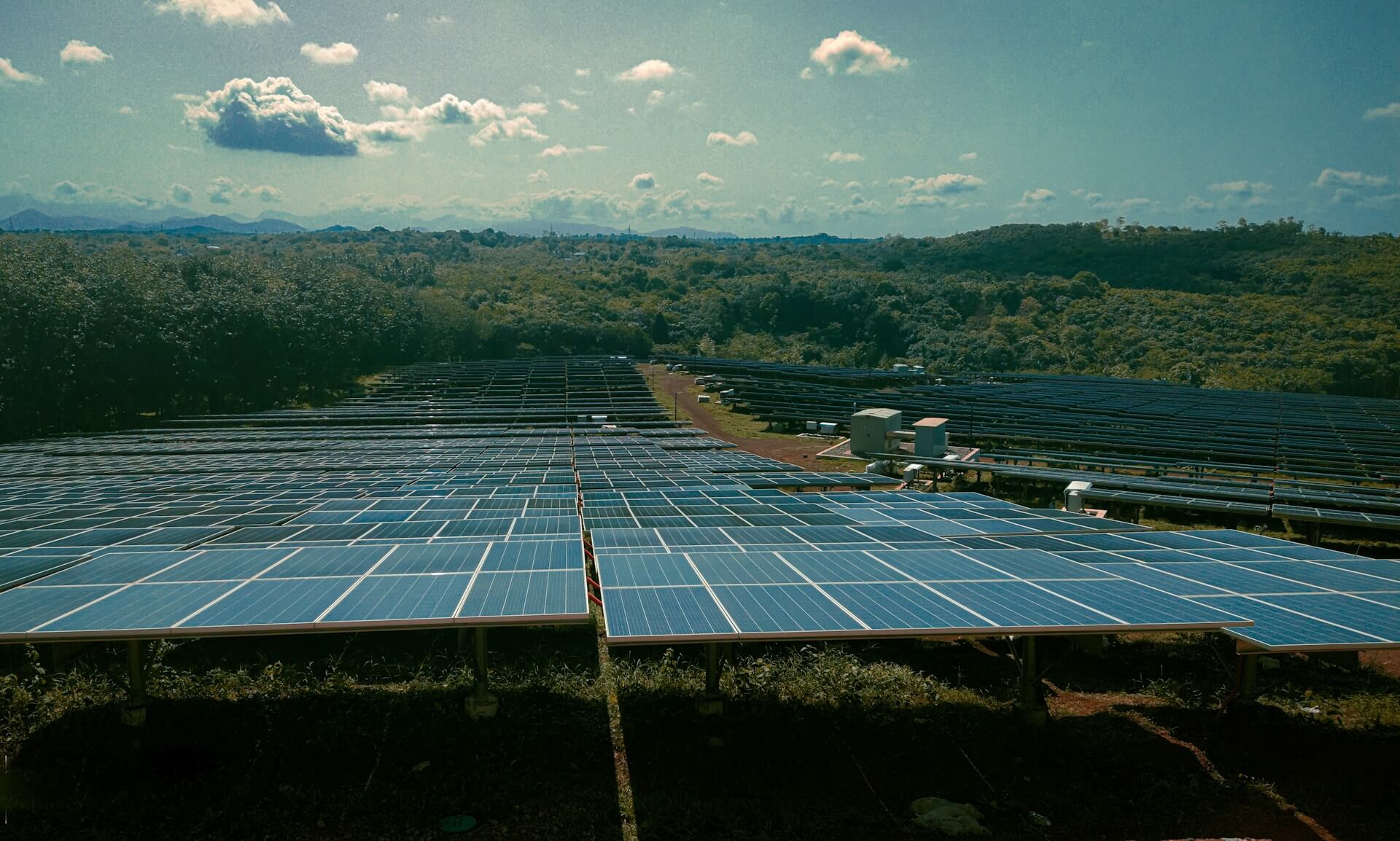



Leave a Reply